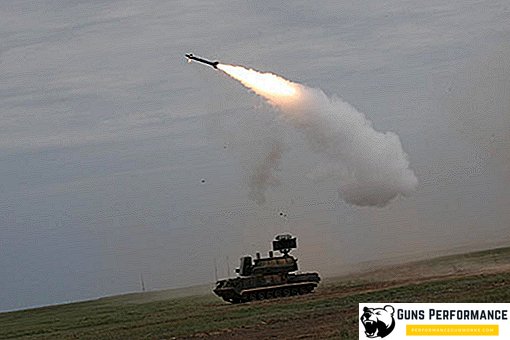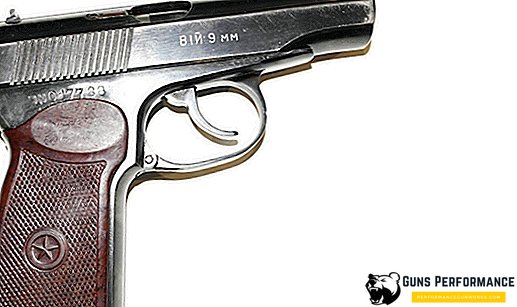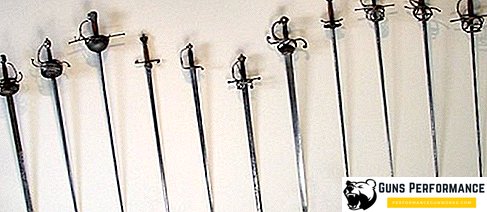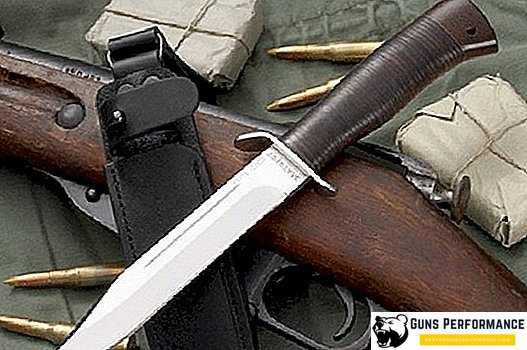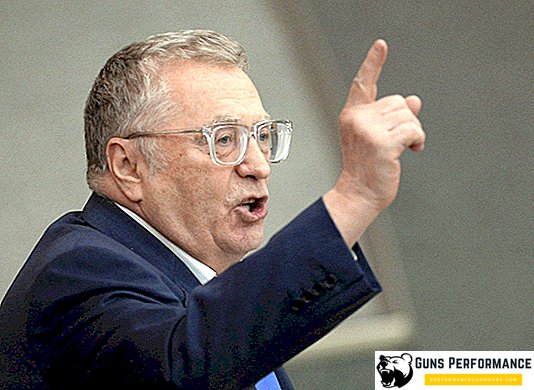
The MiG-9 is a Soviet jet fighter developed immediately after the end of the war. He became the first jet fighter made in the USSR. The MiG-9 fighter was mass-produced from 1946 to 1948, during which more than six hundred combat vehicles were produced.
Aviation history researchers often call the MiG-9 and other Soviet combat vehicles (Yak-15 and Yak-17), created during this period, a "transitional type of fighter". These aircraft were equipped with a reactive power plant, but at the same time they had a glider similar to piston engines.
MiG-9 fighters were in service with the domestic Air Force for long: in the early 50s, they were decommissioned. In the years 1950-1951, nearly four hundred fighters were transferred to the Chinese air force. The Chinese used them mainly as training aircraft: the pilots learned to exploit jets from them.
The MiG-9 cannot be called a very good machine: since the beginning of the tests, it was haunted by disasters, the designers now and then had to correct the defects that appear during operation. However, one should not forget that the MiG-9 was the first jet fighter, it was created and transferred to the troops in a very short time. At the time of the start of work on the creation of this machine in the USSR, there was not even an engine that could develop the thrust necessary for jet flight.
The “problem” MiG-9 was soon replaced by the MiG-15, which both our and foreign experts call one of the best fighters of this period. The designers were able to achieve such success only thanks to the experience gained during the creation of the MiG-9.
The appearance of a large number of fighter jets from the Soviet Union was surprising in the West. There, many did not believe that a country devastated by the war would be able in the shortest possible time to start mass production of the latest aviation technology at that time. The emergence of the MiG-9 and other Soviet jet aircraft had a serious political significance. Although, of course, in the West they had no idea about the difficulties and problems that Soviet aircraft designers and pilots had to face, as well as about what cost the destroyed country to create new types of weapons.

The history of the creation of the first jet aircraft of the USSR
Already at the end of the Second World War, it became clear that the future of aviation belongs to jet aircraft. In the Soviet Union, work began in this direction, they went much faster after becoming acquainted with trophy German developments. At the end of the war, the USSR was able to get not only intact German aircraft and jet engines, but also to seize German enterprises, where they were produced.
The task to create a fighter jet simultaneously received four leading aviation design bureau of the country: Mikoyan, Lavochkin, Yakovlev and Sukhoi. The main problem was that at that time the USSR did not have its own jet aircraft engine, it was yet to be created.
Meanwhile, time was running out: probable opponents - the United States, Britain and Germany - had already established mass production of jet aircraft and actively exploited this technique.
At the first Soviet fighter jets used captured German engines BMW-003A and YuMO-004.
The Mikoyan Design Bureau worked on the creation of two fighters, which at the design stage had the designations I-260 and I-300. Both cars planned to use the engine BMW-003A. Work on the creation of the aircraft began in February 1945.

The I-260 copied the German Me.262 fighter, two jet engines located under the wings of the aircraft. The I-300 had a power plant layout inside the fuselage.
Blowing in the wind tunnel showed that the layout with the engines inside the fuselage is more advantageous. Therefore, it was decided to abandon further work on the I-260 prototype and finish up the I-300, which later became the first Soviet production jet fighter under the designation MiG-9.
In the building were laid three experimental machines for testing: F-1, F-2 and F-3. The F-1 aircraft was ready by December 1945, but the finishing of the machine was delayed until March of the following year, and only then did the tests begin. April 24, 1946 for the first time the fighter took off, the first flight was normal.
Already the initial stage of testing clearly showed the enormous superiority of jet aircraft over piston ones: the MiG-9 could accelerate to a speed of 920 km / h, reach a ceiling of 13 km and reach a height of 5 thousand meters in 4.5 minutes. It should be said that the original aircraft was planned to equip the 57-mm automatic gun H-57, setting it in the partition between the air intakes and two 37-mm guns NS-23, located in the lower part of the fuselage. However, later on, the 57-mm cannons were decided to give up, considering its power to be excessive.

On July 11, 1946, a tragedy occurred: during the flight, a fragment detached from the wing damaged the stabilizer, as a result of which the vehicle lost control and crashed into the ground. The pilot died.
The second prototype F-2 was demonstrated to the public during the Tushino air attack. In August, the Kuybyshev plant began producing a small production batch consisting of ten aircraft. It was planned that they would take part in the parade on Red Square in October 1946.
In March 1947, the mass production of the fighter began. However, after the release of 49 aircraft it was suspended. The car had to be redone urgently. Within two months, the fuel system was seriously upgraded on the MiG-9, the design of the tail fairing was changed, the keel area was increased, a number of other improvements were also made. After this, mass production was resumed.
In June 1947, state tests of four fighters, two experimental (F-2 and F-3) and two serial machines were completed. In general, the MiG-9 received positive feedback: in terms of speed, climb and altitude, it was significantly superior to all piston aircraft in service with the Soviet army. The firepower of the car was unprecedented.
There were problems: when firing cannons at an altitude of more than 7 thousand meters, the engine was gloh. They tried to fight this shortcoming, but they could not completely eliminate it.

If we compare the characteristics of the MiG-9 with a Yak-15 fighter jet, which was developed at the same time, the Mikoyan machine would lose its maneuverability to the Yakovlev Design Bureau, but was faster in horizontal flight and diving.
New car in the troops met without much enthusiasm. The pilots were often afraid to fly on an airplane that does not have a propeller. In addition to pilots, it was necessary to retrain and technical staff, and it was necessary to do so as soon as possible. Haste often led to accidents that were not related to the technical features of the aircraft.
Description of the design of the MiG-9 fighter
The MiG-9 is an all-metal single-seat fighter equipped with two turbojet engines. It is made according to the classical scheme with a mid wing and a tricycle retractable landing gear.
The aircraft has a semi-monocoque fuselage with a smooth working skin. At its nose is an air intake, which is divided into two tunnels, each of which supplies air to one of the engines. The channels have an elliptical section, they pass along the sides of the fuselage, bypassing the cockpit from both sides.

Trapezoidal wing with flaps and ailerons.
The tail of the MiG-9 all-metal with a high-stabilizer.
The cockpit is located in front of the fuselage, it is covered with a streamlined lantern consisting of two parts. The front part, the visor, is fixed, and the rear part moves back along three guides. In the later versions of the car visor made of armored glass. In addition, to protect the pilot on the machine installed front and rear armored plates, their thickness is 12 mm.
The MiG-9 has a tricycle retractable landing gear with a front wheel. The chassis exhaust system is pneumatic.
The fighter was equipped with a power plant consisting of two TRD RD-20, which were nothing more than a copy of the German captured engines BMW-003. Each of them could develop traction in 800 kgf. The engines of the first series (A-1) had a resource of only 10 hours, the resource of the A-2 series was increased to 50 hours, and the RD-20B engines could work for 75 hours. The power plant of the MiG-9 was launched with the help of the Riedel starting motors.
The engines were installed in the rear of the fuselage, the nozzles had adjustment, they could be put in four positions: “start”, “take-off”, “flight” or “high-speed flight”. The control of the nozzle apparatus cone was electro-remote.
To protect the hull from hot gases, a special thermal screen was installed on the underside of the tail section, which was a corrugated sheet of heat-resistant steel.
The fuel was located in ten tanks located in the wings and fuselage. Their total volume was 1,595 liters. The fuel tanks were connected to each other in order to ensure uniform use of fuel, which made it possible to keep the aircraft centered during the flight.
The MiG-9 was equipped with the RSI-6 radio station, the RPKO-10M radio prepass and the KP-14 oxygen apparatus. The aircraft received power from the captured LR-2000 generator, which was later replaced by the domestic GSK-1300.
The fighter’s armament consisted of one 37-mm N-37 cannon with forty rounds of ammunition and two NS-23 23-mm cannons with 40 rounds of ammunition. Originally, the aircraft was planned to be equipped with a more powerful, 57-mm, H-57 cannon, but this idea was later abandoned.

One of the main problems of the fighter was the ingress of powder gases into the engines, since the gun H-37 was installed on the partition between the two air intakes. In the later versions of the aircraft on the H-37 began to install flue pipes. Machines manufactured earlier were equipped with them already in line units.
At first, the MiG-9 was a collimator sight, later it was replaced with an automatic rifle scope.
Characteristics of the MiG-9
Below are the characteristics of the MiG-9.
| Wingspan, m | 10 |
| Length m | 9.75 |
| Height, m | 3.225 |
| Wing area, square m | 18.20 |
| Max. take-off weight, kg | 4998 |
| Engine | 2 RD RD-20 |
| Thrust, kgf | 2 x 800 |
| Max. speed, km, / h | 910 |
| Practical range, km | 800 |
| Rate of climb, m / s | 806 |
| Practical ceiling, m | 12800 |
| Armament | 37-mm gun Н-37, 2 х 23-mm gun НС-23 |




